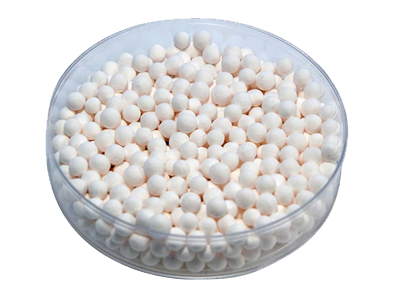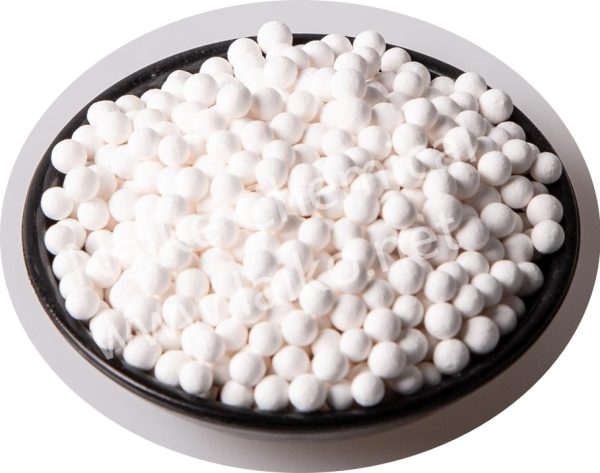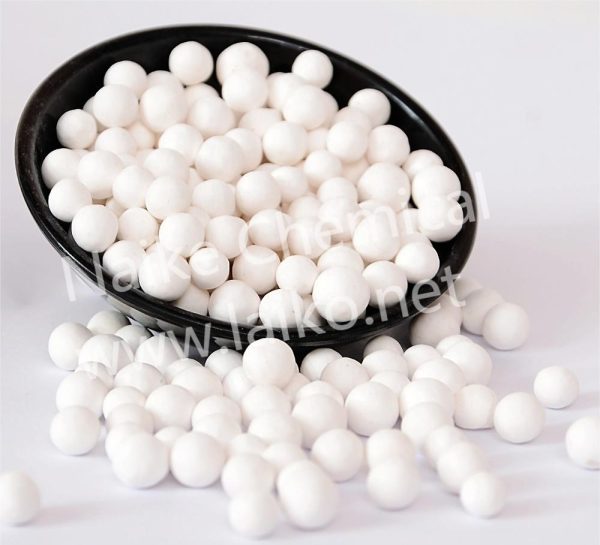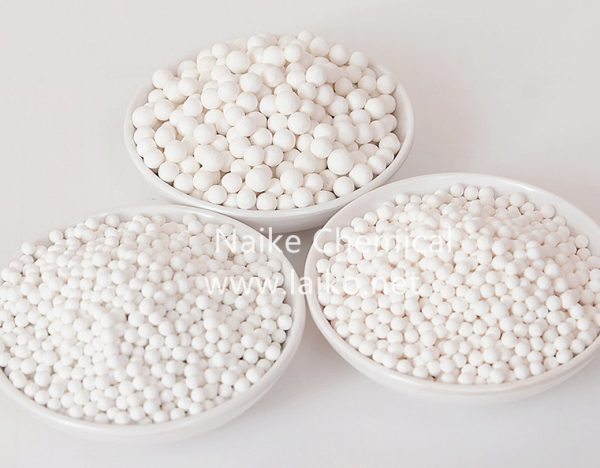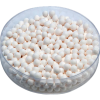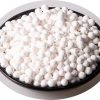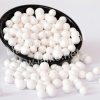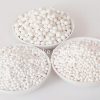Alumina activada
Alumina activada
For the reason of activated alumina’s large capacity of absorption, large surface area, high strength and thermal stability, it has been widely used as an absorber, desiccant and catalyst carrier in chemical, petrochemical and fertilizer industry.
It can also be widely used in the deep drying of cracked gas, ethylene and propylene, hydrogen-generation, air separation, instrument air drying and fluorine treatment for H2O2, also in the absorbing pollution material, such as H2S, SO2, HF and paraffin in the water gas. So it has a high affinity for water/impurity and active catalyst. According to the applications of balls, there are 3 types of Activated Alumina Sorbent, Activated Alumina Desiccant and Activated Alumina Catalyst carrier. Meantime interior composition of the crystal phase was divided into mode Y and X-P. We are a leading manufacturer of high-quality activated alumina products, which are specially designed to meet the diverse needs of various industries.
Descrição
Tamanho da alumina activada
Activated alumina ball in 1-3mm, 3-5mm, 5-8mm.
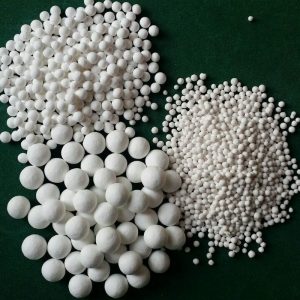
Aplicação da alumina activada
Activated alumina is widely utilized in the drying agent of multiform gas and liquid, also function is used as sorbent, desiccant, catalyst support in reactors for petrochemical industry, chemical industry, fertilizer industry and so on.
Especificação de alumina activada
| Tipo | KA401 Absorvente |
KA402 Desfluoridizador |
KA403 Absorvente de H2O2 |
KA404 Anticloro |
KA405 Suporte do catalisador |
KA406 Absorvente na separação do ar |
||
| Aparência | Bola branca | |||||||
| Fase do cristal principal | χ-ρ | χ-ρ | γ | χ-ρ | γ | χ-ρ | ||
| Composição química | Al2O3 | ≥93 | ≥93 | ≥92 | ≥90 | ≥93 | ≥90 | |
| Na2O | 1-2.5 | ≤0.3 | ≤0.5 | 0.15-0.3 | ≤0.3 | |||
| I.L | 6-9 | 6-8 | ≤8 | ≤ | ≤5 | 6-8 | ||
| Densidade a granel,g/ml | 0.7-0.87 | 0.70-0.75 | 0.65-0.75 | 0.68-0.78 | 0.70-0.80 | 0.68-0.72 | ||
| Área de superfície,m2/g | 270-360 | ≥280 | 200-260 | ≥300 | ≥200 | ≥300 | ||
| Volume de poros,ml/g | 0.3-0.45 | 0.3-0.42 | 0.4-0.46 | 0.3-0.5 | 0.4 | 0.3-0.5 | ||
| Absorção estática, | Água 15-17 |
Fluorina
0.12 |
Água 50 |
Cloro 10-20 |
Água 50-70 |
Água 17-19 |
||
| Atividade, | – | – | 56-62 | – | – | – | ||
| Perda por abrasão, | ≤0.5 | ≤1.0 | ≤1.0 | ≤0.7 | ≤0.4 | ≤0.8 | ||
| Resistência ao esmagamento, N/grão | Φ1-2 | ≥40 | ≥40 | – | ≥40 | – | – | |
| Φ2-3 | ≥60 | ≥60 | – | – | – | – | ||
| Φ3-5 | ≥100 | – | ≥100 | ≥82 | ≥100 | ≥100 | ||
| Φ4-6 | ≥120 | – | ≥130 | ≥120 | ≥120 | ≥110 | ||
KA401: destina-se a ser utilizado como adsorvente
KA402: destina-se a desfluorização
KA403: destina-se a ser absorvido na produção de perixido de hidrogénio (H2O2)
KA404: destina-se ao suporte do catalisador
KA405: destina-se a desidratação e secagem em separação de ar, etc.

